The United Ukrainian Ballet was formed in 2022 as an immediate response to the full-scale war, providing support to Ukrainian dancers and performers in the Netherlands. After a couple of years, the company disbanded due to financial reasons; however, amid swift changes and artistic reinvention, a smaller working group within UUB dared to start a new foundation – Ukrainian International Ballet – continuing to create space for Ukrainian voices in the heart of the Dutch dance world. UIB brings together passionate artists committed not only to preserving Ukrainian classical dance traditions, but also to expanding their boundaries through contemporary collaborations, inclusive performances, and cultural exchange.
In this exclusive Q&A, I speak with the foundation’s co-founders, Kseniia Novikova, Executive Manager, and Vladyslava Kovalenko, Artistic Director, about the legacy of United Ukrainian Ballet, their artistic evolution in the Netherlands, and the urgent responsibility of keeping Ukrainian culture visible on international stages. What emerges from the conversation is the picture of strength and vision as the artists present Ukrainian culture as a source of creative power.

Dasha Lohvynova: Thank you both so much for being here. To begin, could you briefly introduce yourselves?
Kseniia Novikova: I’m Kseniia Novikova, a passionate Ukrainian. I’m a former dancer with the National Opera of Ukraine in Kyiv, where I worked for 20 years. Now, I’m the founder of the Ukrainian International Ballet and serve as its Executive Manager.
Vladyslava Kovalenko: My name is Vladyslava Kovalenko. I’m also Ukrainian. I used to dance at the National Opera of Ukraine [in Kyiv] as a classical ballerina. I’m now based in the Netherlands, exploring contemporary dance and trying out different directions. I’m the Artistic Director of the Ukrainian International Ballet, which has just celebrated its first year.
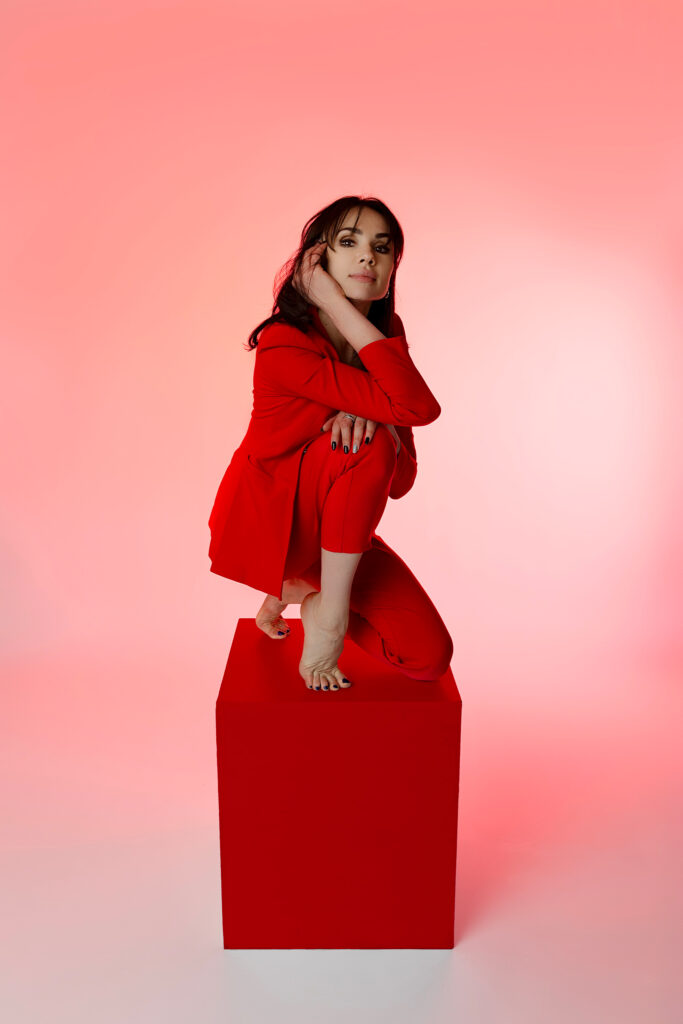
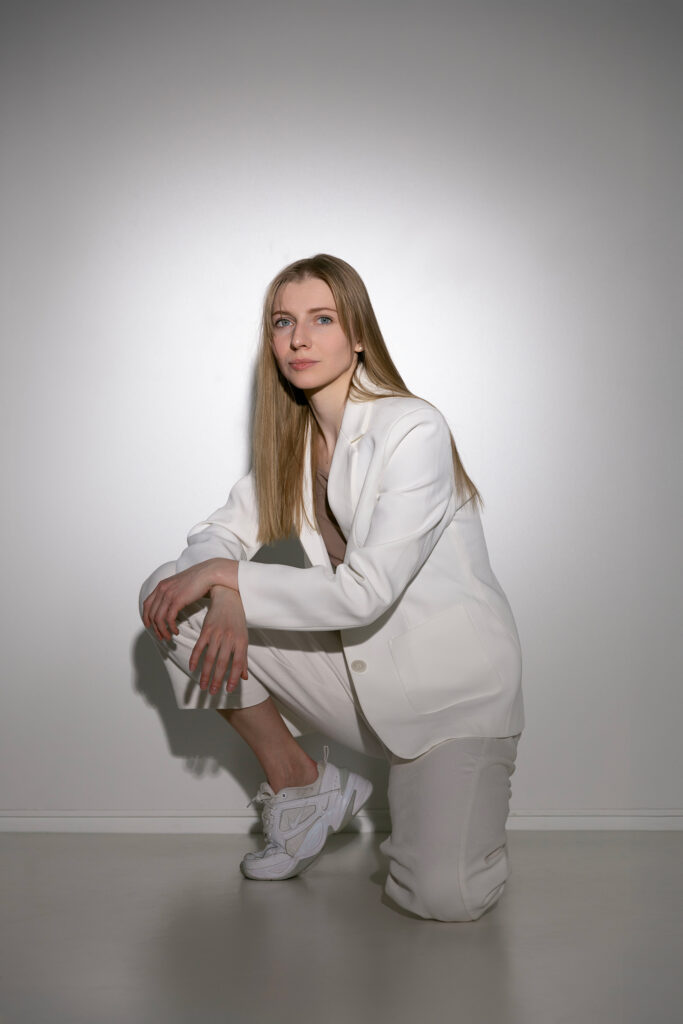
DL: Wow, congratulations! Can you tell me more about how the Ukrainian International Ballet foundation came to be? What motivated you to start it here in the Netherlands?
KN: It all began through the United Ukrainian Ballet, bringing us together in The Hague after the full-scale war started. The foundation was initiated by amazing Dutch people, supported by the Embassy of Ukraine in the Netherlands and Ministry of Education, Culture and Science of the Netherlands. After two years of working together, the company was shut down. That came as a huge shock, a very dark time for us. It felt like a dream had ended – constant touring, incredible people, brilliant choreographers… everything was magical. But, like all magical things, it came to an end. And it was heartbreaking.
Still, we had already formed an initiative group. We saw the signs: reduced funding, vague plans. We were told the project might be coming to a close, so we began preparing. Our group believed we could continue somehow. We wanted to build a sustainable Ukrainian ballet theatre abroad. When everything finally shut down, we were all depressed for a while. But we realized: we still had a renovated dance hall, we had a network, we had a track record. So we asked ourselves: why not try? If it works, amazing. If it doesn’t, at least we gave it our all. But just giving up? Accepting that Ukrainian ballet has no place here? That wasn’t an option. So we started building something new.
We wanted to create a Ukrainian product that’s powerful and emotionally resonant; something that holds its own space on the nowadays stage.
Kseniia Novikova
VK: Our group is small, but everyone in it brings such powerful motivation and vision. We want to keep telling the story of Ukrainian culture abroad, to show Europeans who we are, how we dance, and what we care about. We also want to be in dialogue with the dance world here, learning and sharing experiences. This is still our dance journey, and it’s meaningful. We’re not just passive refugees waiting for help. We’re talented, driven people, searching for opportunities in whatever way we can.
And we want people to enjoy what we do, but also remember that there’s a war happening in our country. Maybe we can remind them through something positive – not just through tragic photos, which many people don’t even want to look at anymore. We want to keep them engaged through empathy and shared emotion.
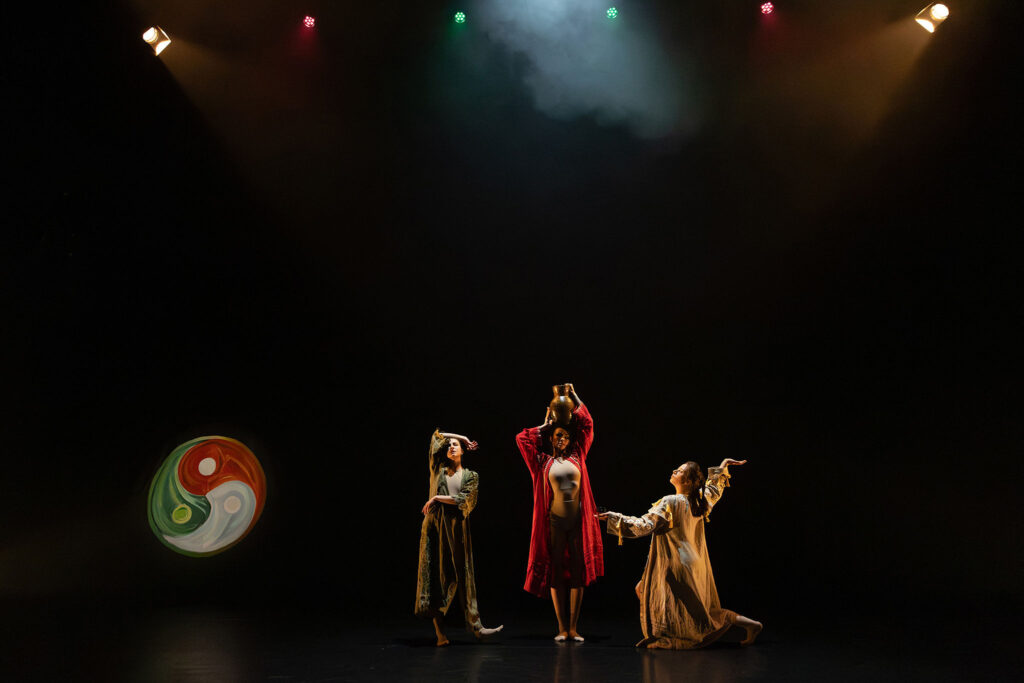
KN: Vlada put it beautifully. Important to note that the entire Ukrainian ballet community refused to perform russian music, especially Tchaikovsky. It’s become a global conversation now, but at the time, we decided to take a stand. Then we asked ourselves: okay, so what can we offer instead of Tchaikovsky?
VK: It’s a huge challenge. We need to create something new, something original, because classical ballets like Swan Lake and Sleeping Beauty have already been done over and over.
KN: We wanted to create a Ukrainian product that’s powerful and emotionally resonant; something that holds its own space on the nowadays stage. Something we could offer instead of the “swan” narrative.
DL: I understand that your focus shifted away from russian art and toward Ukrainian culture, which still feels underrepresented in Dutch society. Can you say more about how your artistic vision has changed since the UUB days?
VK: When we arrived in the Netherlands, we were classical dancers, through and through. Only a few of us had experience with contemporary dance. But being here exposed us to a whole new world. The Netherlands is home to Nederlands Dans Theater (NDT), whose worldview is completely different. In the past three years, we’ve absorbed so many impressions: technical, artistic, even philosophical. Now, we’re trying to blend those perspectives, bringing our own voice into that conversation. It’s evolving into something unexpected.
Even local dancers say we’re different – our foundation is different, our perspective is different. And we see the differences in them, too. It’s a two-way influence. We’re curious to see where it all leads in a few more years. While our classical core is still strong, the influence of contemporary dance is definitely visible in our work.
We’re not just passive refugees waiting for help. We’re talented, driven people, searching for opportunities in whatever way we can.
Vladyslava Kovalenko
KN: What surprised me most was how people here treat artists. In Ukraine, there’s a lot more pressure and critique. Here, they encourage and support you instead of constantly pointing out what you’re doing wrong. It creates a better environment for growth. And the way they work with the body – it’s not just a tool. It’s a philosophy. Movement comes from energy, not just form. I’d love to bring that philosophy back to Ukraine someday.
We’re also experiencing this “interweaving” of cultures in our choreography. For example, Dutch choreographer Richèl Wieles from NDT created a neoclassical piece on pointe for us, it was his first time working with pointe shoes! It was a challenge for all of us. The result didn’t fit neatly into any category. We’re not fully contemporary, not fully classical. We’re somewhere in between.
VK: Even the Dutch say we’re like sponges.
KN: Yes! We absorb everything we encounter, digest it, and then reflect it through our own vision. But no matter what we take in, we carry Ukraine with us. That’s our base. That’s our cultural diplomacy.
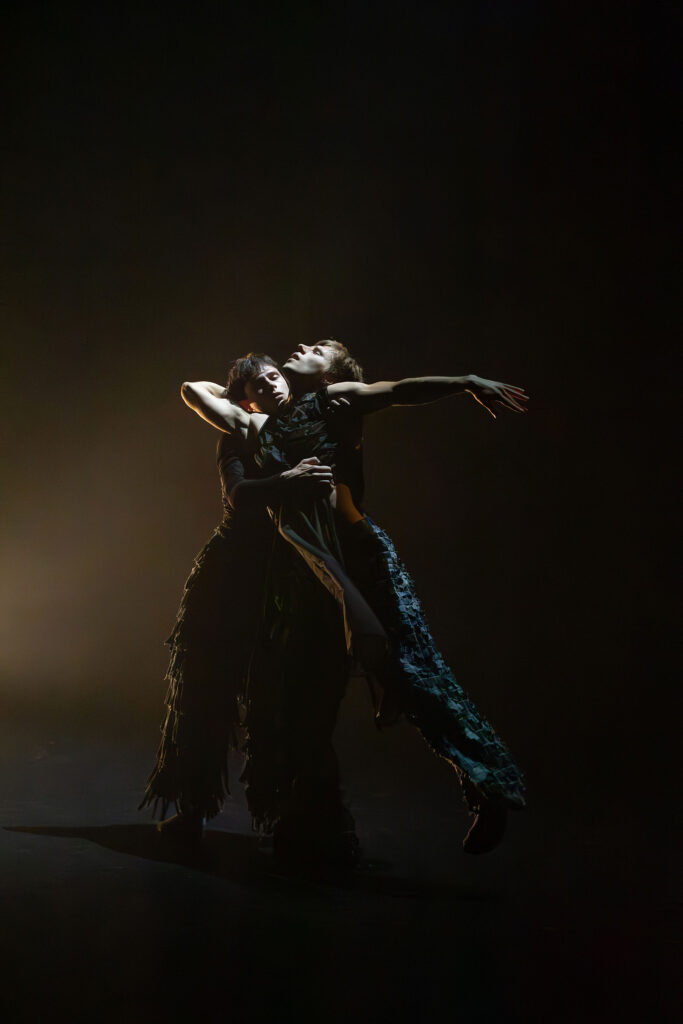
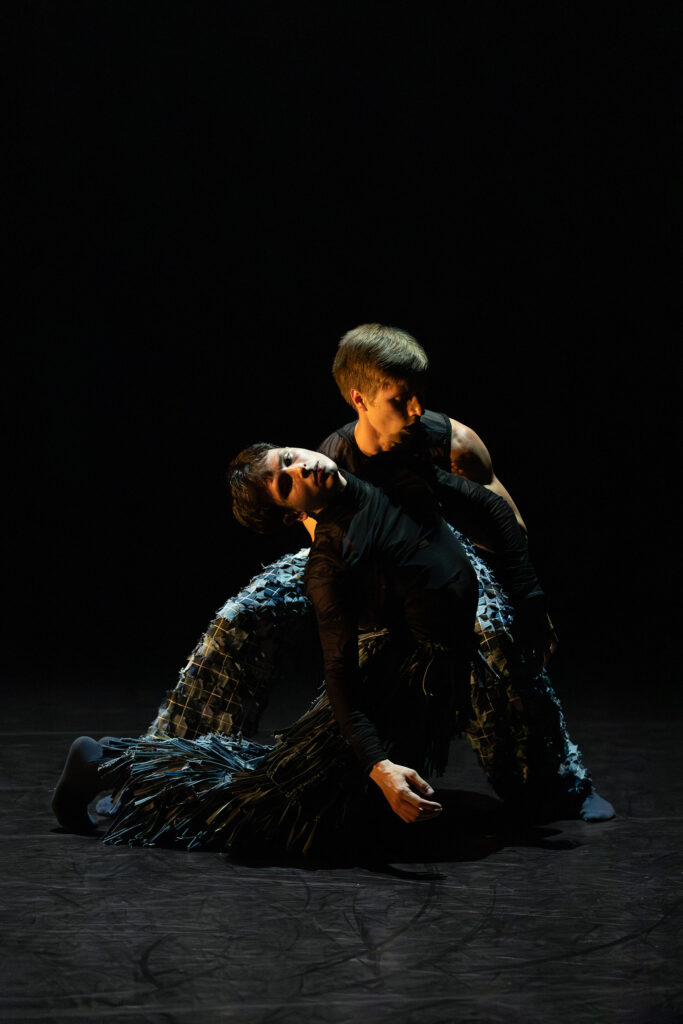
DL: You mentioned your collaboration with Dutch choreographer Richèl Wieles. Were there any other projects or partnerships that felt particularly important or inspiring?
VK: The project Independent24 really stands out. Richèl created a ballet on pointe that reflected our personal stories, what it was like for us to arrive in the Netherlands and live here for a year or so. The music was written by Ukrainian composer Yurii Shepeta. There were ten dancers in the piece. We recorded our own voices, sharing impressions: what we loved, what shocked us, the Dutch accent, strange words. The choreographer recorded us and wove those voices into the piece. It made the experience so personal. The audience would hear us talking and laugh, because it was real. It made the whole performance warm and relatable.
The dance layered over those recordings told our actual stories – not something from 500 years ago. That’s what made it so soulful. We also included a Dutch song that’s emotionally meaningful for local audiences. After the performance, people came up to us and said, “Ah, that song!” It created a connection. Ukrainian and Dutch moments blended into one ballet.
KN: We love abstract dance, but there’s a responsibility to tell real stories right now. Every Ukrainian reading the news today is going through something deep. These stories help us make people aware of that – truthfully, artistically.
DL: And it reaches people on a very emotional level. It’s not a shock value, it’s a connection.
KN: Exactly. People have become used to war news. That’s the tragedy.
VK: When violence becomes part of daily life, it stops triggering the same reaction, especially from those who’ve never experienced it.
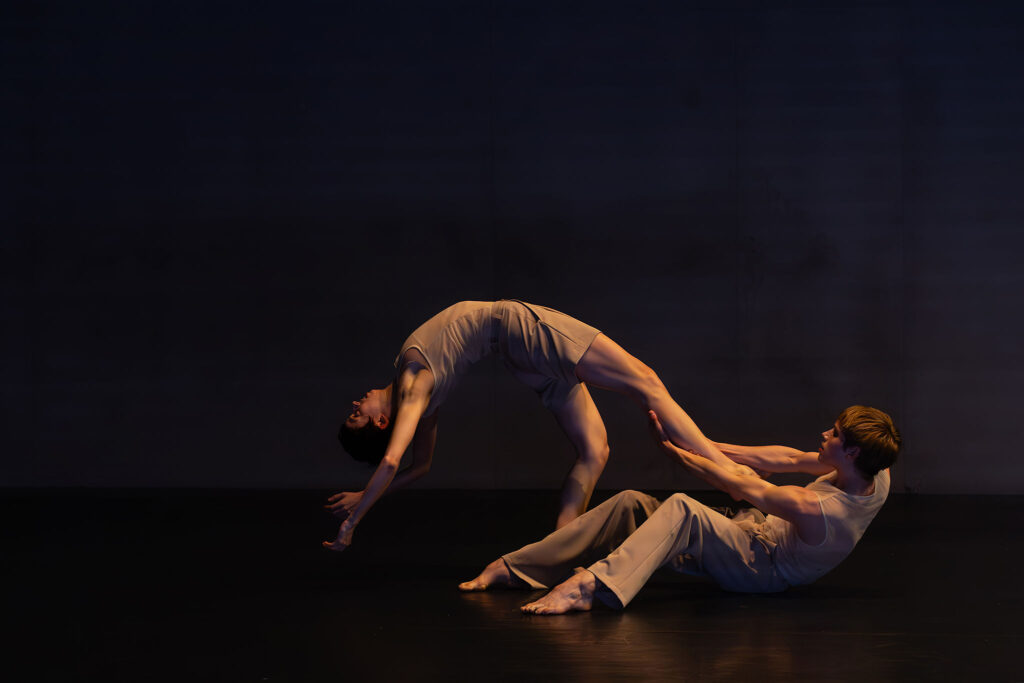
DL: Speaking of depth, how has the full-scale invasion influenced your aesthetic direction, repertoire, or stage design?
VK: Beyond rejecting russian composers, we’ve made very intentional choices. For example, one of our projects features a war veteran, Andrii Siromakha, as the main performer. He uses a wheelchair. The piece was about his emotional journey. We danced around him, but he also danced with us. He loved it and continues to perform in other projects. We see this as a kind of dance therapy, though I’m not sure that’s the perfect term, but it’s something we want to explore further: inclusion, representation, and healing.
KN: We’ve also turned our focus to Ukrainian national culture. That same ballet included music by DakhaBrakha. We’re working with Ukrainian composers who write specifically for us. It’s very important to us to collaborate with our own people. Even our visual materials – our exhibition – tells the truth about artists like Malevich and Repin, who were russified. Dutch audiences read every panel. They’re interested. It feels like we’re slowly reclaiming that space.
VK: Even if someone only remembers one name as “actually Ukrainian,” that’s something.
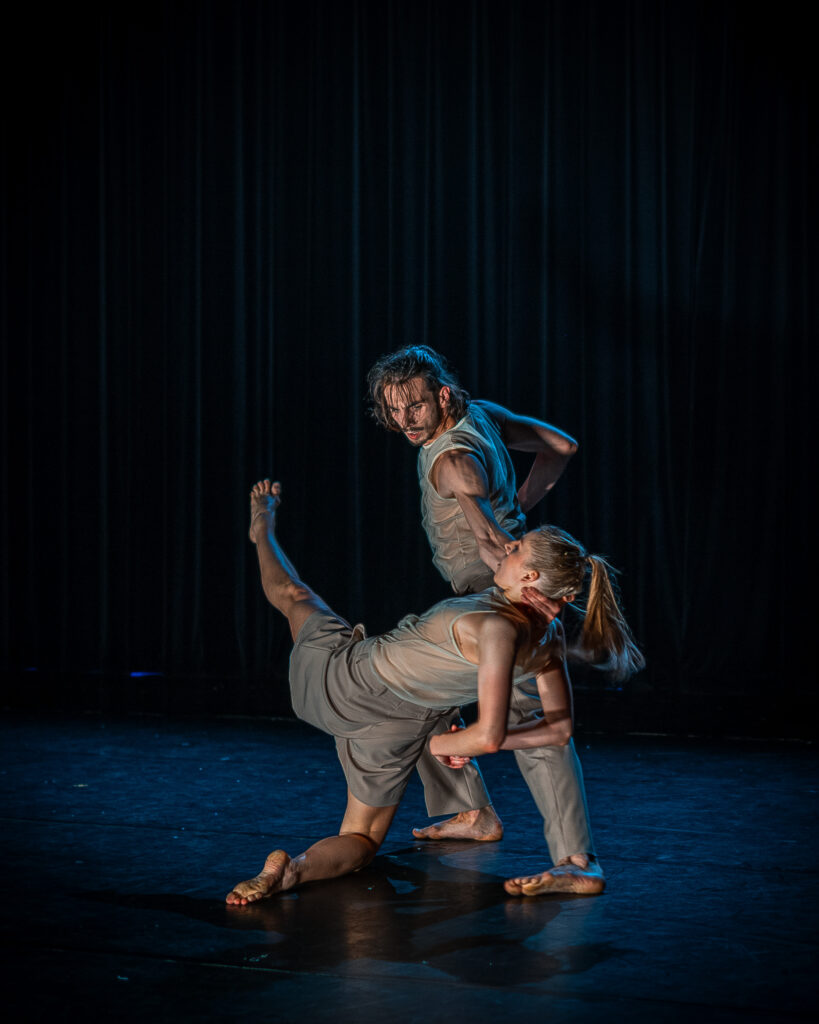
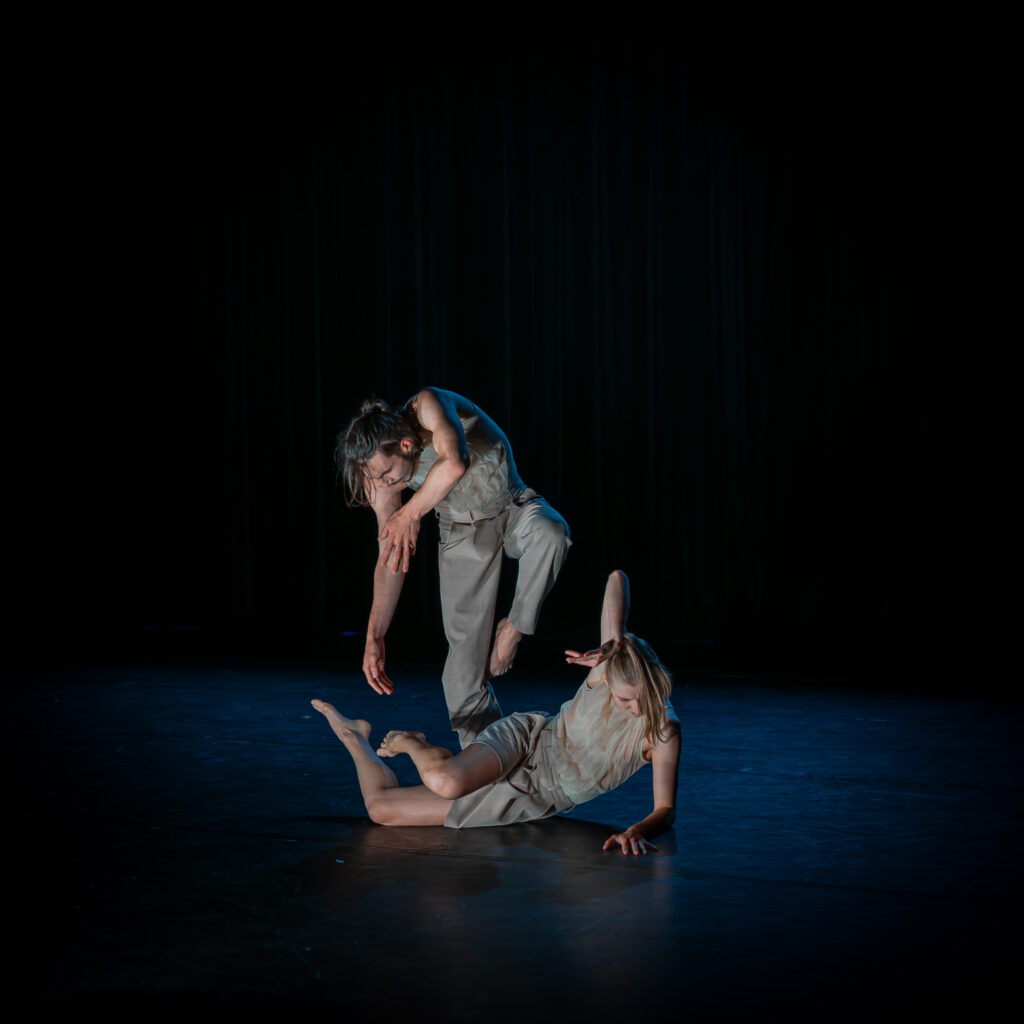
DL: Are there Ukrainian dancers, choreographers, or musicians you highlight during your events, figures who made a significant contribution to ballet but remain under-recognized due to russian dominance?
VK: Definitely. One person everyone should know is Serge Lifar. He’s recognized as Ukrainian. But there are others, like choreographers Anatoliy Shekera and Valeriy Kovtun. They’ve created incredible classical works, but I doubt many people here know their names. We haven’t yet focused on this theme in our performances, but it’s something we want to develop. It’s a great idea, actually.
KN: Many brilliant Ukrainian dancers have ended up working abroad. That’s partly a result of the cultural policies – or lack thereof – in pre-war Ukraine. russia, on the other hand, has invested enormous amounts into cultural soft power for decades, even centuries. They’ve treated culture as a strategic tool.
VK: They’ve had long-term, well-funded plans to export their culture.
KN: It’s a calculated expansion. And we, by contrast, were naive and inexperienced. Still, bitter experience teaches you fast. And I think we’ve learned more than we ever thought possible. I believe we will eventually surpass our former “teachers.”
Goodness is stronger than evil, but only if we come together.
Kateryna Novikova
DL: With that in mind, what kind of emotional connection are you hoping to create with Dutch or international audiences, beyond raising awareness about the full-scale war in Ukraine?
KN: We want to share the strength of the human spirit — to tell our true stories openly, and through them inspire people who may be facing challenges of their own to keep living this life.
For us, this is not only about performance — it’s about creating a meaningful cultural exchange. We want to show the beauty that emerges when nations come together, when people from different backgrounds unite and create something new. Goodness is stronger than evil, but only if we come together.
It’s the beauty of human connection, and the power that is born from it.
VK: For me, it’s about dialogue. I don’t want to preach or teach the audience something. I want to create a shared space of exchange, where we offer something genuine and heartfelt, and they take from it whatever resonates. Maybe it’s something heavy, maybe something beautiful. But it’s their own reflection. It’s not about imposing a message. It’s about sharing honestly.
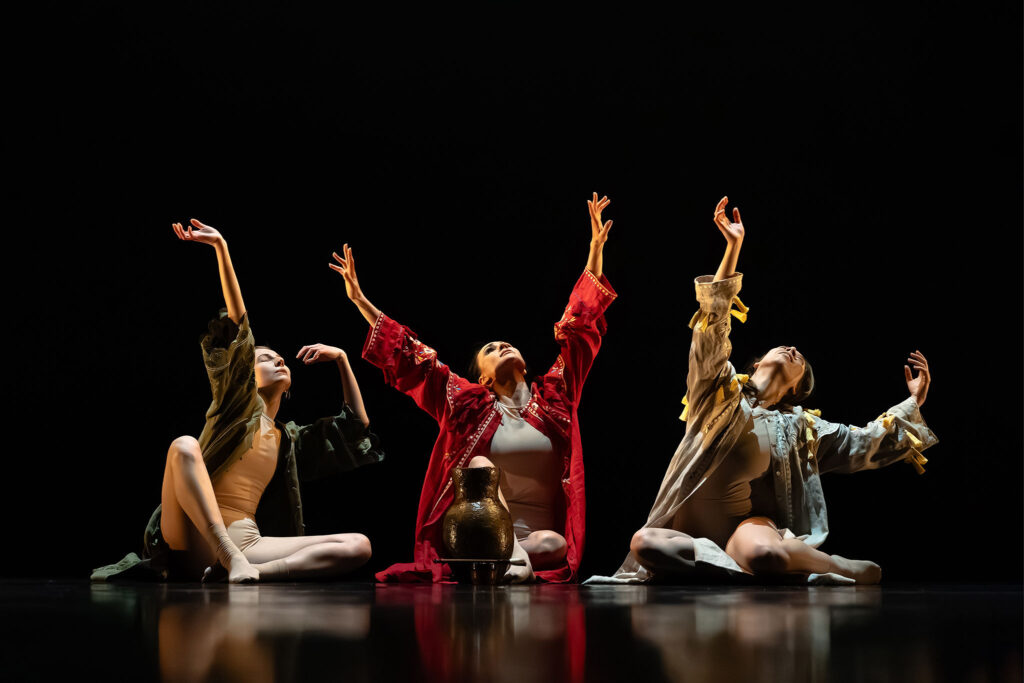
DL: That’s a really beautiful way to put it. Now, moving to something a bit more practical: what challenges have you faced in setting up the foundation here in the Netherlands?
VK: Every day brings a new challenge, honestly. There’s no smooth road.
KN: Of course, it’s not easy for refugees in a new country to build something of their own and try to share their culture. The Dutch dance market is already quite full — with very high-level companies in both contemporary and classical directions — so finding our own niche and keeping the audience interested is a constant challenge.
Booking theatres isn’t simple either, with such a dense calendar of events and performances. Selling tickets can be tough, too — simply because there’s so much going on, and so much on offer of this kind. And yes, the bureaucracy doesn’t make things easier.
But then again, every field has its challenges. In our case, there’s something new to solve every day — and honestly, that’s part of what keeps it interesting. Without the challenges, it would probably be not that interesting.
VK: Sometimes these challenges hit when you least expect them. But we’re lucky to have such a strong, supportive team. When one of us is down, someone else lifts them up. That solidarity is priceless. I only wish our efforts were recognized at the level they deserve.
KN: One of the biggest lessons I’ve learned is how important mentality is – how people think and function. In the beginning, things were much slower than in Ukraine. People seemed too relaxed and I was surprised why they don’t want to solve my problems in their spare time. But eventually, I learned to hear and respect local mentality that taught me that this is a completely different yet healthy rhythm.
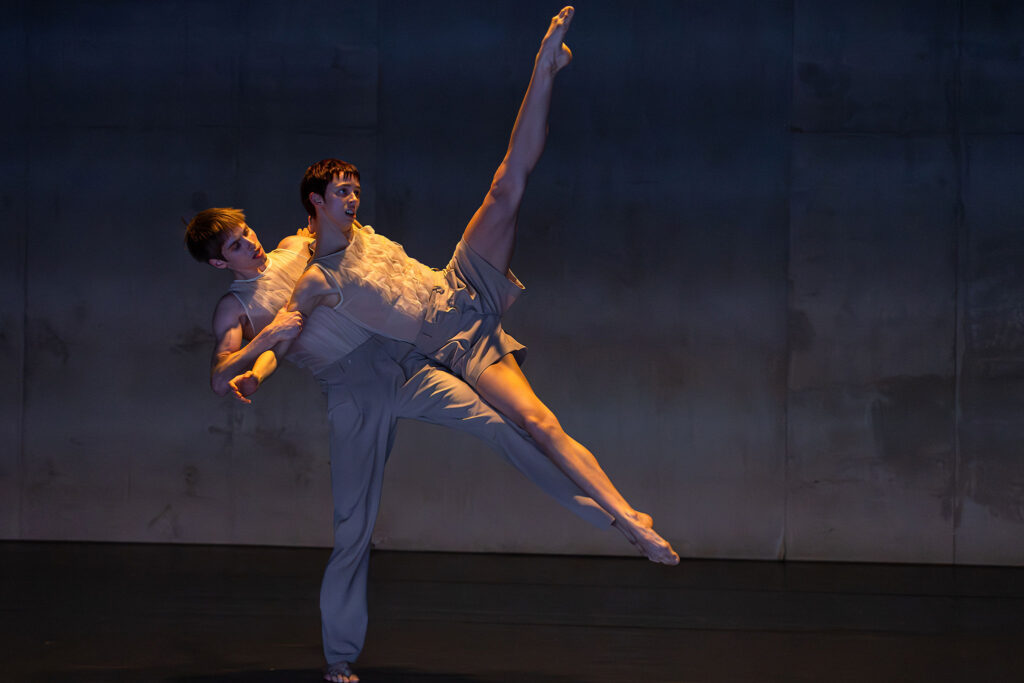
DL: Very true, I relate to that a lot. From where you started a year ago to now, what does Ukrainian International Ballet represent today? How do you see your identity and mission?
VK: First and foremost, we’re a Ukrainian voice. We’re dancers, choreographers, artists and we want to share stories about Ukraine and about ourselves. But we’re also building something broader: a platform for cultural exchange. A space where Dutch dancers, or anyone living here, can collaborate with us and be part of that journey.
We want to expand, perform more, and reach more audiences. We want to support others, veterans from Ukraine, local dancers seeking opportunities. We want to keep learning, growing, and creating new work. That’s the direction we’re heading in.
KN: We are the uniting platform. A meeting point for dancers and choreographers to connect, share, and build something together. That kind of exchange forms the new type of creative language – I’d say it’s a new Ukrainian-Dutch moment in dance. And of course, our core remains Ukrainian.
People sometimes ask, “Aren’t you limiting yourselves by using the word ‘Ukrainian’ in your name?” But for us, it’s a strength. Our name used to be United Ukrainian Ballet as it was founded and suggested by Dutch people. Once we started our foundation, I insisted on changing it to Ukrainian International Ballet because we’re still Ukrainian at core, even as we open to the world.
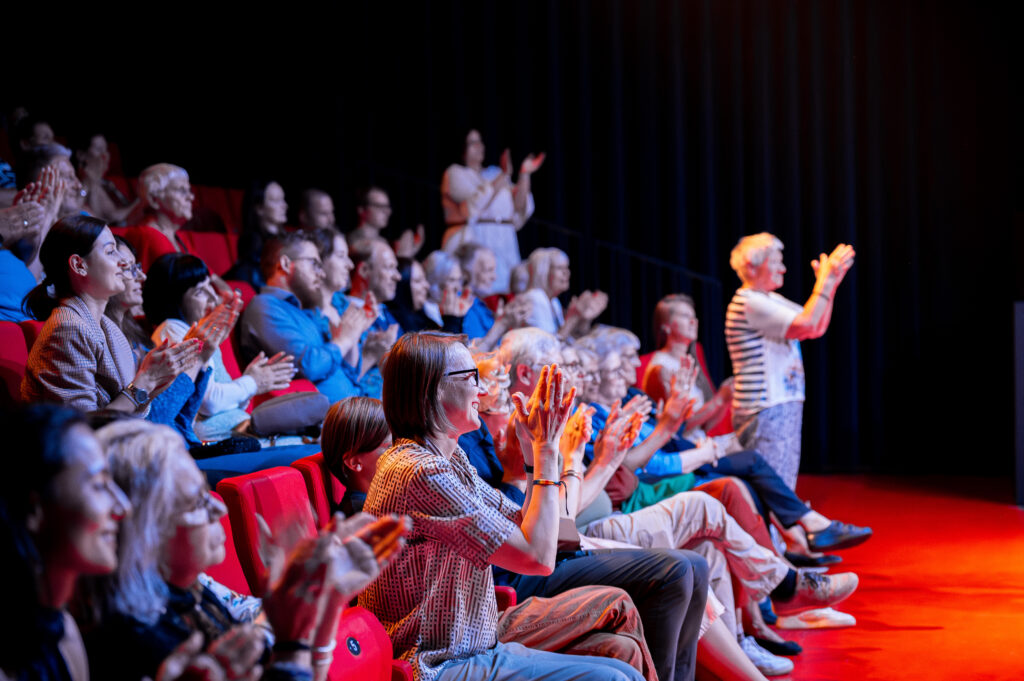
DL: It really does. And I think what you’re doing now will become part of a very meaningful cultural legacy, connecting to artists, creatives, and audiences both in the Netherlands and in Ukraine. Even if you’re not based in Ukraine physically, you’re building something deeply rooted in Ukrainian culture while fostering a “two-way street” with your new context here.
VK: I once brought a video recording of the Dutch ballet performance to Kyiv. I just really loved the piece and wanted people to see it. And the response was amazing, so much attention and feedback. People are hungry for this kind of artistic exchange. And yet so many smaller productions aren’t available online, or are hidden behind copyright restrictions. It would be incredible if more work like that could be brought to Ukraine.
People are hungry for this kind of artistic exchange.
Vladyslava Kovalenko
KN: There’s such rich work here. I understand it’s hard right now, because of the war, logistics, and money. But people are interested. And when the time comes, our cultural scene could really bloom from this kind of international input.
DL: I completely agree. And even though some argue that culture isn’t a priority during wartime.
VK: In a world that sometimes feels so bleak, even a small spark – a tiny moment of joy from art – can lighten someone’s day. And that’s invaluable.

DL: What are the upcoming plans of the UIB? Is there anything you would like to share: your next performance, project, or dream?
KN: One dream of mine is to stage The Forest Song – a Ukrainian classic based on Lesia Ukrainka’s tale. But I don’t want to stop at just the ballet. I imagine a larger eco-project connected to it, something involving children, something that explores our relationship with nature. A holistic, thoughtful initiative. But for now, we’re taking it step by step. Gaining trust, experience, and building toward bigger things.
VK: In the short term, we’re preparing for a tour this fall with two programs: Independent24 and Past, Present, Future. These performances will travel across the Netherlands until mid-autumn. And beyond that, we have a dream, a big one: to organize a grand gala concert. A large-scale event, even if it’s with a small cast, in support of Ukraine. That’s our next big goal.
DL: Wonderful. That feels like a perfect note to end on. Thank you both so much.
To learn more about the Ukrainian International Ballet’s performances and upcoming program, visit their website or follow them on their social media: Instagram & Facebook.
You can purchase tickets for Past Present Future here and Independent24 here.
In June 2025, the Ukrainian International Ballet has also joined VATAHA’s Vyshyvanka Day, performing a touching piece. Read more about the performance and Vsyhyvanka Day in the article below:
To financially support VATAHA’s work to promote Ukrainian artists, you can make a tax-deductible contribution here!
This interview was conducted on July 7, 2025, translated from Ukrainian into English, and edited for clarity.